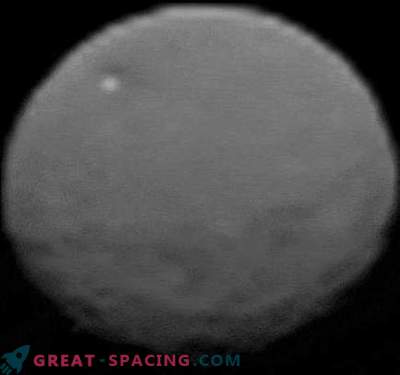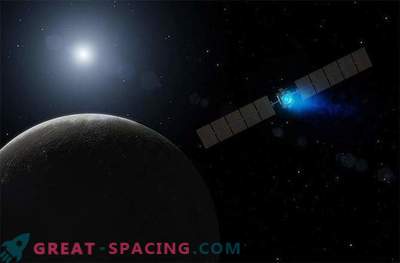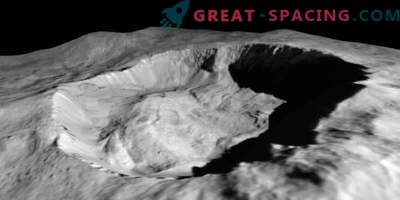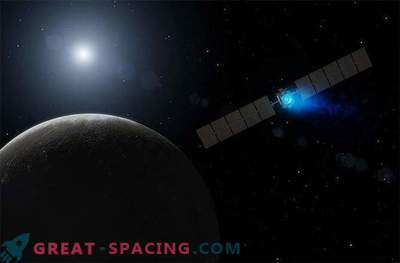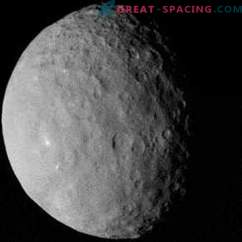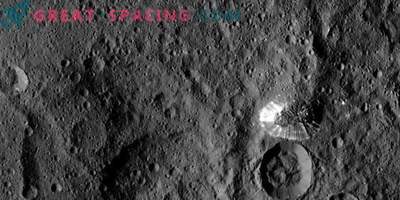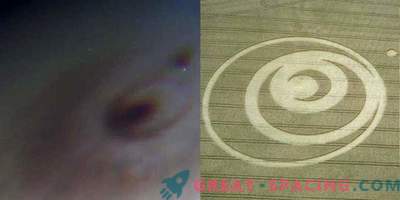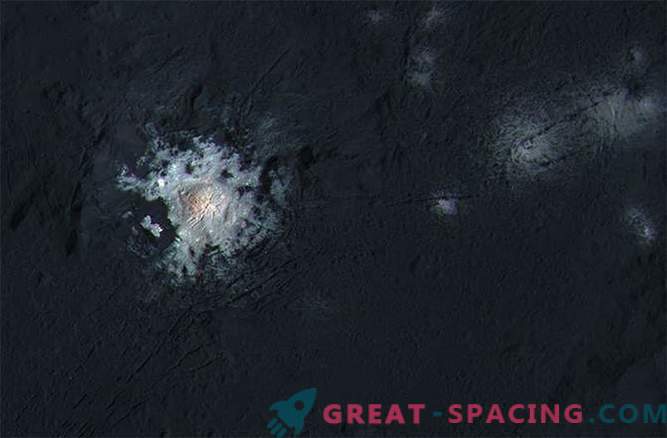
After a year of speculation since the NASA Dawn mission arrived in orbit around the dwarf planet of Ceres, we are approaching the answer, which causes mysterious bright spots inside the famous Occator crater.
"Before Dawn began his intensive observations of Ceres last year, the Occator Crater looked like one big bright area," said Ralph Jaumann, a planetologist and participant in the Dawn Program from the German Aerospace Center (DLR) in Berlin . "Now, upon closer inspection, we can see the complex functions that provide new secrets to explore."
This improved color view (pictured above), shown at the 47th Annual Scientific Conference of the Moon and Planets in Woodlands, Texas on Tuesday, presents surprisingly detailed observation of the domed structure inside the 57-mile crater zone. The dome, located inside a smooth-walled pit, has faults and is surrounded by white spotted clusters.
These high-resolution pictures of the famous region were made when Dawn performed low orbital mapping within 240 miles of the surface of a small world.
"The complex surface geometry of the crater suggests geological activity in the recent past, but we will need to perform detailed geological mapping of the crater in order to test its formation hypotheses," said Jaumann.

Global Ceres Surface Map in Color
Further work is needed to fully understand what internal mechanisms account for Occator’s strange geology, but from existing observations, it appears that the dome-shaped structure is apparently of volcanic origin. However, if confirmed, this is a completely different type of volcano than what we are familiar with on Earth.
Long before Dawn entered Ceres orbit, it was known that Ceres, which is located in the Belt of asteroids between the orbits of Mars and Jupiter, has significant amounts of water in the upper layers of its surface. Bright spots were also observed inside the Occator crater, which led to the suggestion that the geology of Ceres is driven by cryovolcanics. Assuming that significant amounts of volatile matter (ice) inside Ceres are gently heated by the inside of a dwarf planet, these chemicals can be erupted through the surface layers. Over time, a dome, cracks and a crust may form.
This finding is related to other recent discoveries at Ceres. First of all, crater sizes are smaller than one would expect for such an ancient body; perhaps current processes such as ice cryovolcanism are constantly rejuvenating the surface of Ceres. In addition, ground-based observations of bright spots showed daily variations.
On other findings, summarized at the meeting on Tuesday, a planetologist said that the NASA VIR instrument found water inside the 6-mile zone of the young Oxo crater in the northern hemisphere of Ceres. In addition, the dwarf planet has a rich variety of mineral substances across its surface. VIR analysis on another crater called Haulani showed a completely different material composition below the surface. “The variety of materials suggests that there is either a mixed layer under it, or the bombing changed the properties of the materials,” said Maria Cristina de Sanctis, a leading scientist at VIR, from the National Institute of Astrophysics, Rome. Of course, Ceres was not the first body in the Asteroid Belt that Dawn visited. The spacecraft also spent 14 months in 2011-2012 in orbit around the massive West asteroid, which allowed the mission’s scientists to make direct comparisons between the two bodies.
"We are pleased to uncover these beautiful new images, especially Occator, which illustrate the complexity of the processes that form the surface of Ceres," said Carol Raymond, deputy principal investigator of the Dawn Dawn mission at NASA's Passenger Movement Laboratory, Pasadena, California. “Now that we can see the mysterious bright spots, surface minerals and high-resolution morphology of Ceres, we are busy working to find out what processes have shaped this unique dwarf planet. Comparing Ceres with Vesta, we will form a new understanding of the early Solar system.”



